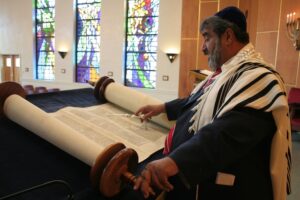The Bedford School District’s Diversity, Equity, and Inclusion Committee was formed over this past summer as a School Board Task Force to review what DEI work needed to be done within the school district, therefore removing BHS’s Diversity Committee. The Diversity Committee, originally created after the killing of George Floyd, operated throughout the 2020-2021 school year before being disbanded over the summer. The Committee was made up of multiple sectors: small student groups and a Steering Committee composed of students, teachers, and parents. The group facilitated the creation of the podcasts that all advisories listened to last year, which were filled with stories from students of color about their personal experiences with racism.
However, BHS students were not notified of the change in schedule when the Superintendent and School Board decided to replace the committee with a new group: DEI. Senior Taylor Hatem says that after parent complaints, the “miscommunication” between the Bedford School Board and the BHS Diversity Committee, conflicting opinions over a statement that the committee signed about the Atlanta shooting, and the chaos of back-to-school, the school board made this decision to form DEI. Over the summer, DEI’s goal was to concretely outline the Bedford School District’s definitions of diversity, equity, and inclusion, and to unify the school in their efforts to uphold those values. Principal Jozokos emailed some students asking for representatives for the new committee, which juniors Abigail Kincaid and Reet Goraya, and senior Taylor Hatem, all signed up for.
DEI has repeatedly been falsely labeled as promoting Critical Race Theory, spreading misinformation about the legal term. Critical Race Theory was developed by Harvard Law School Professor Derrick Bell in the mid-1970s and was refined by the legal scholar Kimberlé Crenshaw, who coined the term. It is a legal theory, which has since spread to other scholarly fields, that investigates the role of race and racism in society, arguing that racism is embedded in everyday life, not only an explicit bias expressed by select individuals or institutions. Furthermore, CRT states that protecting the privileges of some groups compound disadvantages for black people and other racial minorities–whether intentional or not.
The national backlash over a rumor that CRT is being taught in primary schools fueled legal changes to prevent this from happening. In 2020, President Donald Trump issued an executive order that prohibited any diversity and inclusion training that was deemed to include “Divisive Concepts,” “Race or Sex Stereotyping,” and “Race or Sex Scapegoating.” Critical Race Theory was considered divisive. This later led to a law in NH called the Right to Freedom from Discrimination in Public Workplaces and Education, which bars teachers from saying that one race is superior or inferior, or that one group is inherently discriminatory to another group. This law has created apprehension among teachers as they struggle to find a middle ground while talking about difficult racial topics such as slavery. This reservation experienced by teachers has only increased, especially now that NH has set up a web page where parents are able to directly file a complaint against their child’s teachers for discrimination.
The mission of DEI over this past summer was to establish definitions for diversity, equity, and inclusion at Bedford, and determine whether BHS needed any forms of active change. The committee decided on these definitions to send to the school board: diversity refers to all aspects of human difference; equity provides access, opportunity, and support to allow each person to reach their full potential; inclusion refers to a community where all members are safe, respected, and valued, and where they have a sense of belonging and are able to participate effectively.
Taylor Hatem says that she feels the original goals of DEI were not accomplished, describing how their recommendations were never voted on and people started to become defensive or believed that Bedford did not need more diversity work. The school board has also made no official changes to any policies, although BHS’s original Diversity Committee is awaiting final submission of its status as a BHS committee and plans to start its work again. As to whether she was trying to promote CRT in Bedford, Taylor argues that she had “no power to implement curriculum or push any agenda,” she just wanted to give students a platform to talk about issues they care about.







Be First to Comment